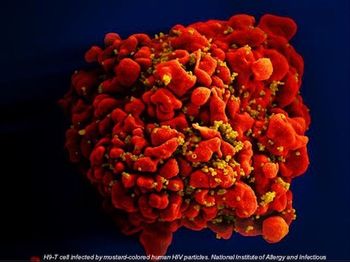
In case you missed them, we've compiled a list of the latest US Food and Drug Administration (FDA) recalls posted this week.

In case you missed them, we've compiled a list of the latest US Food and Drug Administration (FDA) recalls posted this week.

The CDC announces an investigation of a multistate Salmonella outbreak linked with raw sprouts served at Jimmy John’s.

Aetna has agreed to a $17 million settlement of a lawsuit centering around the HIV privacy violation that affected approximately 12,000 of the insurer’s customers in 2017.

More than $2 billion was invested in research and development relevant to the issue of antimicrobial resistance in 2016 alone.

The FDA grants PMA approval for the Aptima HBV Quant Assay for the quantitation of hepatitis B viral load on the Panther system.

The San Diego Board of Supervisors ends the local public health emergency announced in September 2017 for the ongoing hepatitis A outbreak in San Diego.

The results of a new CDC Morbidity and Mortality Weekly Report revealed that in US states and territories with local Zika virus transmission, the prevalence of Zika-related birth defects is increasing.

A new study is adding new evidence to the link between severe periodontal disease and the risk of cancer, finding the risk is higher than previous studies have indicated.

A recent study finds that younger patients, women, and white individuals infected with HPV-associated cancers have superior survival at 5 years.

Can a prior pharmaceutical company president successfully address ever-climbing medication costs in the United States?

The eNose was also able to recognize methicillin-resistant Staphylococcus aureus (MRSA) from methicillin-sensitive Staphylococcus aureus (MSSA).

As 49 states report widespread flu activity for the second week in a row, researchers at UCLA offer hope in the form of a new flu vaccine candidate.

Analysis finds increased social spending was positively associated with population health measures in Canada at the provincial level.

The publication of a new study poses novel questions for dual-use research of concern and if such work should have been published.

The test combines the convenience of the saliva test with the reliability of the blood test.

A new article suggests that in order to combat antibiotic resistance in lower- and middle-income countries, particular attention needs to be paid to emerging One Health challenges.

The opioid epidemic in the United States has led to a sharp increase in hepatitis C cases, and with that, a rise in hospitalizations according to a new report.

A new data analysis suggests that individuals born at the time of a flu pandemic are more susceptible to death in future pandemics.

A total of 22 cases of yellow fever have been confirmed in Minas Gerais since July 2017 and 15 of those individuals have died.

The CDC is investigating a multistate Salmonella outbreak that has been linked to frozen shredded coconut products.

Three medical centers in the United States have now been approved to perform kidney transplants from living HIV-positive donors to HIV-positive recipients. We break down the risks and benefits.

A new study confirms the ribavirin steady-state serum levels that correspond to high rates of efficacy and low adverse events.

Stay up-to-date on the latest infectious disease news by checking out our top 5 articles of the week.

We've compiled a list of the latest US Food and Drug Administration (FDA) recalls posted this week that you should know about.

University of Western Ontario investigators have found that the genetic diversity of HIV-1 during early infection is greater in the vaginal tract than in the bloodstream.

A recent study from the Lovelace Respiratory Research Institute shows that human adenovirus type 4 may be an underestimated cause of acute respiratory disease among adults.

New research suggests that the main mode of transmission during Europe’s Second Pandemic of plague may have been human fleas and lice.

Investigators from Massachusetts General Hospital (MGH) have made some interesting findings about methicillin-resistant Staphylococcus aureu (MRSA) that may hold the key to curbing lymphatic repercussions.

SHEA has released expert guidance advising hospitals on when they can safely take patients with multidrug-resistant bacteria off of contact precautions.

A new study suggests that Salmonella may have played a significant role in an epidemic that killed over 7 million Aztecs during the 16th century.